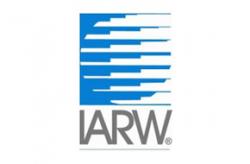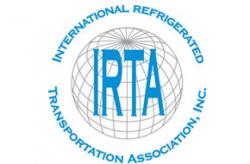Last Mile Delivery Challenges
Last mile logistics have faced myriad issues because of the global pandemic. Massive vaccine shipments coupled with online shopping and quick delivery expectations – the result of the “Amazon effect” (Amazon’s free two-hour grocery delivery scheme implemented in October 2019) are major factors impacting last mile transport. Another enormous one is labor.
“As you look at the impact of COVID-19 on supply chains, every step of the process has been impacted by labor,” comments Amy Gerberi, Vice President, Foodservice Solutions at Lineage Logistics. “Manufacturers, ports, brokers, 3PLs and distributors – all of us are trying to hire the same warehouse and driver labor.” On the road, last mile delivery is arguably the most difficult driving job in the industry. “The driver must navigate tight parking lots, customers’ cars in those same tight parking lots, and drive-throughs,” Gerberi says. “They off load the truck by hand in snow, rain, ice, extreme cold and heat, all while representing the company they deliver for and the customer they are delivering to. Most foodservice customers don’t want a tractor trailer in their parking lot during business hours. Add in early morning or late night/overnight deliveries, and the work hours become even more undesirable.”
Although there is a lot of interest today in just-in-time logistics in retail, Gerberi points out that last mile delivery has traditionally been a “just-in-time” model. She offers restaurants as a good example since they depend on last mile, or just in time deliveries as they cannot carry large inventory to support multiple days between deliveries. “They also do not have a lot of space in their back of house,” she says. “Unlike an Amazon order that most people place, we are delivering large amounts of cases to a restaurant typically within 36 to 48 hours of order placement. Customers order to consumer demand, and we must be flexible to their needs.” COVID-19 particularly put a strain on the supply chain in early 2020, when consumers stopped eating out. “The clock was ticking on shelf-life expirations, there was pressure from manufacturers who had already produced inventory and a workforce very unsure of the safety of going to work,” Gerberi recalls. “Then, as fast as the supply chain stopped, it whiplashed back; exponentially and unexpectedly,” she adds. “As areas of the country re-opened, demand surged. Every step of the supply chain, from manufacturers to last mile distributors, found challenges in getting enough labor, supplies and equipment in place as quickly as was needed to meet demand and customer obligations.” She also emphasizes the importance of retaining employees. “Without warehouse team members and drivers, we cannot meet basic expectations of service,” she says. “In addition to being an awesome place to work, the work hours, physical demand and pay need to be competitive to attract talent.”
Box Truck Challenge
Travis McCain, Vice President of Sales for FFE Transportation Services, Inc., says capacity concerns, lead time and driver availability all play into the equation and are compounded by inventory shortages and the intensity with which many shippers must produce and ship immediately. “In speaking with many of our customers, there is a great challenge in producing the desired amount of product that consumers are demanding,” McCain says. “Low inventory levels are causing shipments that may have traditionally been shipped from one location in the United States to another now come from several different locations nationwide. This creates a dramatic challenge in securing capacity.” FFE Transportation Services has been addressing last mile issues since 2018, when it implemented a new division called KoolShot Expedited. It focuses solely on first and final mile opportunities that were occurring along with market growth across the industry. “We saw that customers wanted urgent deliveries and that home delivery for food programs was starting to take off,” he recalls. “We recognized an opportunity to provide that same service, but from a big box perspective, in other words, providing shippers another level of service that wasn’t readily available.”
KoolShot provides same-day, next-day and flexible deliveries from single packages to shipments up to 7,000 pounds. The service utilizes 17-foot, multi-temperature refrigerated box trucks that can operate at all dock heights. “We have a highly trained driver base that’s focused on safety and timely service,” McCain says. With a concentration on transporting pharmaceuticals and food grade products, KoolShot also operates in regional sections, delivering meals to schools and foodbanks from Philadelphia to locations in New Jersey, North Carolina, Florida and Texas. “Final mile deliveries from shippers to actual end customers, along with TSA certified drivers and their ability to deliver or pickup pharmaceuticals at the major airports, has provided a much-needed solution to our customers.” And today, the service is branching beyond expedited services to provide out-of-product services that are needed by many restaurants and fast-food operators. “We can deliver to many stores quickly and on one truck,” McCain says.
KoolShot Expedited also arranges for deliveries to hospitals, schools or food banks – small market segments that many transport companies do not service. “The business rounds out our service offerings,” he says. “It’s a true complement to our customers, particularly since we are able to hire non-CDL drivers,” he says. This is a huge advantage for individuals without a commercial driver license (nonCDL) who do not want the experience of driving a larger unit, want to be home nightly, yet still make a decent living, notes McCain. He adds, the company attracts these individuals through the three driver academies it offers across the United States. “We put these individuals in our classes in conjunction with a local community college and they can earn credits towards an Associate degree,” he explains.
The company, McCain says, has had great success with the program. “It allows drivers the option to be home nightly, every other night, or run a long-haul network,” McCain says. As a result, he says the company can provide a path to a good long-term career. “FFE Transportation Services also finds that they can offer individuals a career path that starts out working on the docks, moves up to KoolShot Expedited and then into our big trucks,” McCain says. “It gives them a clear outline of what they can do with their career.”
Canadian View
Canada is experiencing similar issues with last mile deliveries. There, too, the biggest issue is labor. “This has been particularly difficult during the pandemic because of generous governmental programs,” says Catherine Lambert, Communication and Employer Branding Strategist for Congebec Logistics. “Workers are staying at home under the CERB (Canada Emergency Response Benefit) rather than looking for work,” she says. She adds the pandemic also highlighted how logistics companies must compete for labor against big tech companies such as Amazon that offer glamorous employer branding.
“Competing for labor against such companies in a market where workers are less available makes it even more challenging for our cold supply chain, especially when glamour is not easily associated with our industry and work conditions in cold environments are not for everyone,” Lambert says.
Tech Offerings
While not a panacea for correcting labor issues, technology is a playing big role in cold chain operations and offers solutions to some of the problems impacting the industry such as tracking and tracing shipments. “For example, consumers can scan their eggs to ensure they are still good for consumption, but they can also know which farms they came from and the cold chain through which they traveled,” says Lambert. “Consumers now have a better visibility on the entire food supply chain and can see that their product has transited through the cold chain. They can see the whole picture of food transit.” This is important since consumers do not have a direct line of communication with companies utilizing this technology in the cold chain. However, QR traceability, Lambert says, is a game changer.
“Information availability will become important in our industry because we will be visible to the end consumer and because that information may bring new changes in consumption,” Lambert says. Automation is also critical to the future of the cold chain industry as it helps ensure efficiency, food safety and sustainability in customers’ extended supply chains. Gerberi stresses how Lineage Logistics works continually to improve the manual warehouse and last mile delivery processes for its team members. The company utilizes a process called Dynamic Profiling, which gives it the ability to adapt to a wide range of customer needs. Automated Storage and Retrieval Systems technology also move products seamlessly through multi-level and high-bay locations, maximizing storage density and reducing service times.
KAREN E. THUERMER is a freelance writer based in Alexandria, Virginia, who specializes in economic and logistics issues.
EMAIL: kthuermer@aol.com



